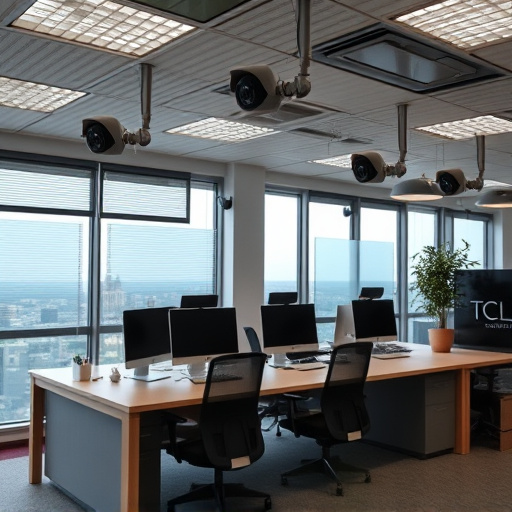In today's digital era, as remote work becomes prevalent, securing businesses against cybersecurity threats is crucial. Office hidden cameras emerge as a powerful tool for maintaining safety and productivity. These discrete surveillance systems protect sensitive information, deter security breaches, and foster integrity by offering real-time monitoring, immediate incident response, and evidence collection. With various types available, from wireless apps to miniature cameras, strategic placement, legal compliance, and robust data protection are vital for effective use. Advanced hidden cameras with motion detection and cloud storage provide 24/7 protection against theft, vandalism, and other malicious activities, ensuring a safer and more secure workplace.
Hidden cameras in offices have become an essential tool for enhancing security, preventing theft, and ensuring employee integrity. As digital assets and sensitive information grow, so does the need for discreet surveillance. This article explores the various types of office hidden cameras available, from small, unnoticeable models to advanced systems with motion detection. We delve into legal and ethical considerations, best practices for placement and maintenance, and how to leverage advanced features for comprehensive security.
Understanding the Need for Office Hidden Cameras
In today’s digital age, maintaining a secure and productive work environment is paramount for any business. One effective tool that has gained prominence in this regard is the use of office hidden cameras. These discreet surveillance systems serve as powerful assets for organizations aiming to safeguard their operations, protect sensitive information, and foster a culture of integrity. By deploying hidden cameras, businesses can effectively deter potential security breaches, theft, or unauthorized access to confidential data.
The need for office hidden cameras arises from the ever-evolving landscape of cybersecurity threats. With remote work becoming increasingly common, ensuring the safety of office spaces and valuable assets is more critical than ever. Hidden cameras provide a proactive solution, offering peace of mind and enabling businesses to monitor activities without compromising on privacy or disrupting daily operations. This technology allows for discreet observation, immediate incident response, and the collection of evidence, ultimately contributing to a safer and more secure workplace.
Types of Hidden Cameras Available for Offices
In today’s digital era, maintaining security and privacy in offices has become paramount. One effective solution is the use of office hidden cameras. These devices come in various types designed to fit seamlessly into any workspace, offering both surveillance and peace of mind. Among the most popular are wireless hidden cameras, which eliminate the need for complex cabling, making them ideal for discreet placement. They often feature advanced functionalities like motion detection, night vision, and remote access via smartphone apps, ensuring constant monitoring from anywhere at any time.
Another type is the miniature camera, known for its compact size—often resembling everyday objects like pen holders or desk accessories. These tiny yet powerful cameras provide high-resolution video and audio recordings, capturing intricate details without drawing attention. For larger spaces, hidden CCTV systems offer a comprehensive security solution. These systems can be linked to professional monitoring services, providing real-time alerts and recordings that aid in maintaining a safe and efficient office environment.
Legal and Ethical Considerations for Installation
The installation of hidden cameras in an office environment raises important legal and ethical questions. In many jurisdictions, there are strict regulations governing the use of surveillance technology, particularly regarding privacy rights. Employers must be mindful of the specific laws in their region, as the acceptable practices for monitoring employees can vary significantly. For instance, some areas require explicit consent from all staff members before installing any form of observation device, while others have more lenient guidelines.
When considering the ethical implications, it’s crucial to strike a balance between maintaining a safe and productive workspace and respecting employee privacy. Office hidden cameras should be employed sparingly and only when necessary for legitimate business purposes, such as preventing theft or enhancing security. Transparency is key; employees should be made aware of the surveillance system’s existence and its intended use to ensure fairness and avoid any potential misuse of footage.
Best Practices for Placement and Maintenance
When setting up hidden cameras in an office, strategic placement is key for effective surveillance. Opt for areas that offer unobstructed views and are less noticeable to employees. Common spots include above doors, near windows, or on ceilings. Ensure these cameras cover high-traffic zones, entry points, and valuable assets. For optimal results, position them discreetly but visibly, allowing for clear footage without causing concern among staff.
Regular maintenance is equally important. Test the cameras periodically to ensure they function correctly and capture sharp images. Keep records of all camera placements and maintain a log of any repairs or replacements needed. Additionally, consider implementing a secure system for storing video footage, encrypting data, and regularly backing up recordings to prevent unauthorized access and data breaches. This proactive approach will help maintain the integrity of your office hidden cameras and ensure their long-term effectiveness.
Enhancing Security with Advanced Features
In today’s digital era, enhancing security in the office has become a top priority for businesses of all sizes. One of the most effective tools to achieve this is the utilization of advanced hidden cameras for office spaces. These sophisticated devices go beyond basic surveillance by offering features like motion detection, high-definition video quality, and remote access via mobile apps. With such technology in place, employees and management can rest assured that their workspace is secure, allowing them to focus on productivity without constant worry.
Hidden cameras for offices also serve as a powerful deterrent against theft, vandalism, or any other malicious activities. Their strategic placement ensures round-the-clock monitoring, providing valuable footage that can be crucial in investigating and resolving security incidents. Moreover, many modern hidden cameras come equipped with cloud storage options, ensuring easy access to recorded data from anywhere at any time. This enhances the overall efficiency of the office’s security management system.
